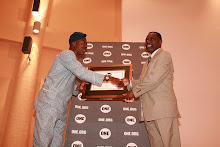Professor Oladosu A. Ojengbede, Director Centre for Population & Reproductive Health, College of Medicine, University of Ibadan Oyo State Nigeria made this known in his presentation titled ‘Management of haemorrhagic shock’.
According to Ojengbede, obstetric haemorrhage is blood loss or bleeding during pregnancy; labour and within 42 days of termination of pregnancy. When there is excessive blood loss, women go into a state of shock which is progressively more dangerous if actions are taken on time to revive the patient. The major method of managing haemorrhagic shock’ is through resuscitation, which involves oxygenation, restoration of circulation, drug therapy, further evaluation and remedy of the basic problem that led to the shock.
The NASG is constructed like a pair of open-seamed trousers with one half made of velcro material so that it can be worn by women of varying sizes. It is worn from the abdomen to the legs and works by applying external counter pressure to the lower body, such that the blood is forced back towards the head and chest when the women is in a prone position. This way, the NASG can be used for Postpartum hemorrhage, Post cesarean hemorrhage, Ectopic Pregnancy, Trauma with injury/hemorrhage below the diaphragm while stabilizing the woman for further evaluation, transporting or preparing for definitive surgical treatment.
The NASG can be applied by anybody –doctors, nurses, CHEW, health attendants, ambulance drivers etc - who has been trained and with proper monitoring for adverse effects, can be safely and comfortably used for 24 - 48 hours. The NASG is so effective, it may arrest bleeding and avoid surgical intervention and even decrease the need for blood transfusions.
Prof Ojengbede however warned that the use of anti shock garment does not avert the necessity for evaluation to identify cause of shock, management of fluid and blood replacement, and appropriate therapy.

Prof. Ojengbede and colleague testing NASG at SOGON conference.
*Reported by Nnenna Ike


No comments:
Post a Comment